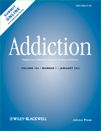Mephedrone, new kid for the chop?
ABSTRACT
Aims Mephedrone (4-methylmethcathinone) is a novel synthetic stimulant drug that has recently become popular in the United Kingdom and elsewhere in Europe. It has a short history of human consumption and little is known about its prevalence and pattern of use. This study aimed to obtain preliminary data on its use and effects among dance drug users in the United Kingdom.
Design Cross-sectional anonymous online survey of mephedrone recruited as part of larger study exploring patterns of drug use among those associated with the dance music scene.
Setting UK-based dance music and clubbing website.
Participants A total of 947 ever users of mephedrone recruited as part of a wider study on dance drug use patterns.
Measurements Assessment of demographics, ever and current drug use and patterns and selected effects following use of mephedrone.
Findings A total of 947 (41.3%) of 2295 participants reported ever having used mephedrone. Mephedrone was the sixth most frequently used drug in the last month after tobacco, alcohol, cannabis, cocaine and 3,4-methylenedioxymethamphetamine (MDMA). Users were typically younger (P < 0.001) and male (P < 0.01); 15.1% reported using weekly or more frequently; 49.5% reported using between 0.5 and 1 g during a typical session; 69.5% reported that intranasal use was the most common route of use. Intranasal use was associated with increased abuse liability; 54.6% of those who have also used cocaine reported that the quality of the high obtained with mephedrone was better, with those using intranasally being significantly more likely than those who took the drug orally to report that mephedrone was more addictive (P < 0.02) and more risky (P < 0.02) than cocaine. Route of use was unrelated to any stimulant-related adverse effect apart from palpitations (P < 0.005).
Conclusions Mephedrone appears to be used primarily intranasally and to have comparable abuse potential to cocaine, with more than half those who use both reporting that mephedrone gives a better quality high.




